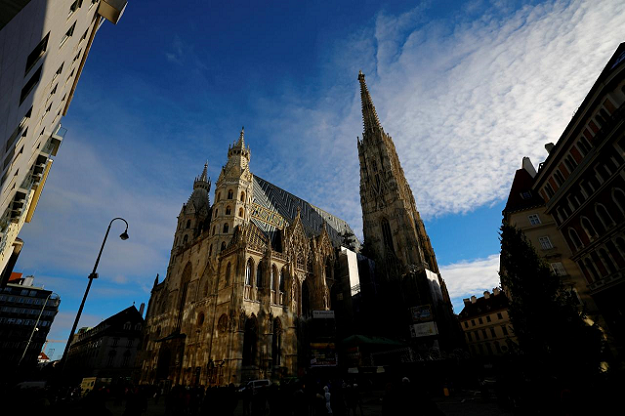Revealed: 'The most livable city' in the world
Five worst cities to live in were Damascus followed by Dhaka, Lagos, Karachi and Port Moresby in Papua New Guinea

It is the first time a European metropolis has topped the annual chart compiled by the Economist Intelligence Unit which identifies the best urban playgrounds to live and work in.
PHOTO:REUTERS
It is the first time a European metropolis has topped the annual chart compiled by the Economist Intelligence Unit which identifies the best urban playgrounds to live and work in.
 St. Stephen's cathedral (Stephansdom) is pictured in Vienna, Austria.PHOTO:REUTERS
St. Stephen's cathedral (Stephansdom) is pictured in Vienna, Austria.PHOTO:REUTERSEach year 140 cities are given scores out of 100 on a range of factors such as living standards, crime, transport infrastructure, access to education and healthcare, as well as political and economic stability.
Vienna scored a "near-ideal" 99.1, beating Melbourne into second place on 98.4. Japan's Osaka took third place.
 A woman rests in a public garden next to the Natural History Museum in Vienna, Austria.PHOTO:REUTERS
A woman rests in a public garden next to the Natural History Museum in Vienna, Austria.PHOTO:REUTERSAustralia and Canada dominated the top ten, each boasting three cities. Australia had Melbourne, Sydney (fifth) and Adelaide (10th) while Canada had Calgary (fourth), Vancouver (sixth) and Toronto (joint seventh).
"Those that score best tend to be mid-sized cities in wealthier countries," researchers said in their report.
They noted that several cities in the top 10 had relatively low population densities which fostered "a range of recreational activities without leading to high crime levels or overburdened infrastructure".
Australia and Canada, researchers said, have an overall average population density of 3.2 and four people per square kilometre respectively, compared to a global average of 58.
Japan, which alongside Osaka boasted Tokyo in the top ten (joint seventh), is the glaring exception to that rule with a nationwide average of 347 people per square kilometre but its cities are still famed for their transport networks and living standards.
Copenhagen was the only other European city in the top ten at ninth place.
 A supermoon rises behind the Riesenrad (Giant Ferris Wheel) landmark in Vienna.PHOTO:REUTERS
A supermoon rises behind the Riesenrad (Giant Ferris Wheel) landmark in Vienna.PHOTO:REUTERSResearchers said wealthy financial capitals such as Paris (19th), London (48th) and New York (57th) tended to be "victims of their own success" with higher crime rates and overstretched infrastructure dampening their appeal.
Karachi ranked 6th cheapest city in the world by Economist Intelligence Unit
At the other end of the spectrum the five worst cities to live in were Damascus at the bottom of the table followed by Dhaka, Lagos, Karachi and Port Moresby in Papua New Guinea.
The survey also looked at cities where long-term improvements had been made. Abidjan, Hanoi, Belgrade and Tehran saw the largest improvements in liveability over the last five years -- more than five percentage points.
Sindh CM launches $98m World Bank-assisted project to make Karachi 'livable'
Ukraine's Kiev, the capital of a European country wracked by political violence, civil war and the loss of Crimea to Russia, saw the largest drop in its liveability over the last five years (-12.6 per cent).
Access to potable water remains a problem, says report
Puerto Rico's San Juan -- which was devastated by a hurricane last year -- as well as Damascus and Caracas also saw steep drops over the same period.



















COMMENTS
Comments are moderated and generally will be posted if they are on-topic and not abusive.
For more information, please see our Comments FAQ